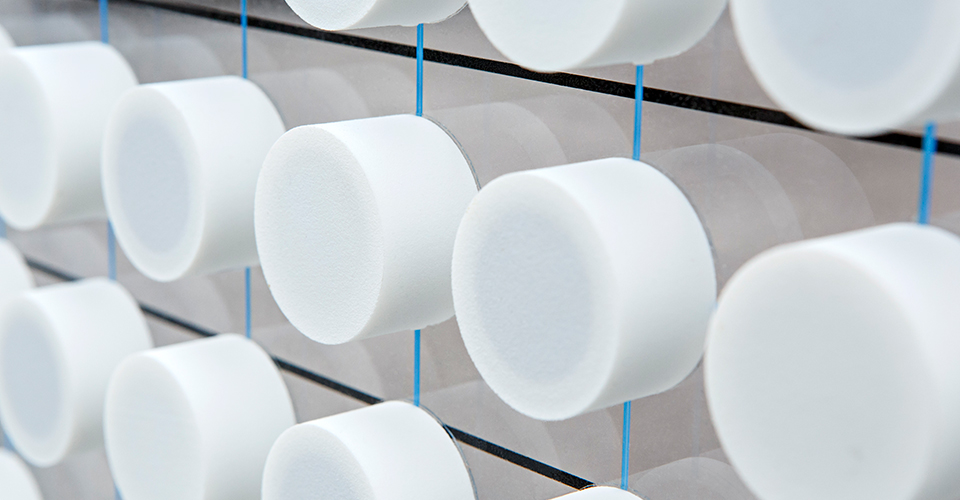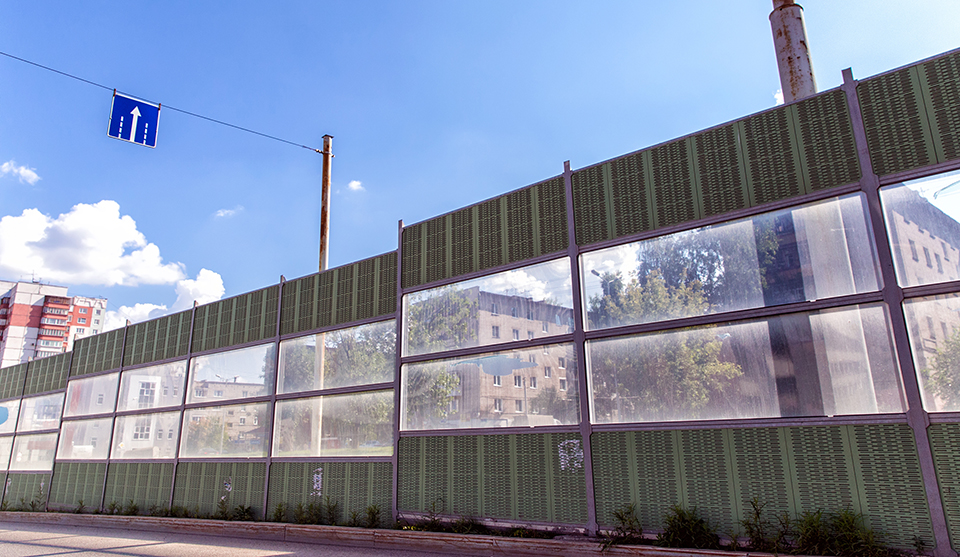The application-oriented integration of VAMM is possible in diverse areas


In order to identify innovative solutions for noise protection on freeways, ASFiNAG, in cooperation with IÖB (Innovation Promoting Public Procurement), called the Challenge "Motorways and Expressways: Reducing noise pollution through technology". The Fraunhofer LBF's concept of improving the transmission properties of noise barriers with the help of vibroacoustic metamaterials came out on top among many submissions in the jury's evaluation.
This was followed by a joint research and development project together with ASFiNAG with the aim of building and characterizing a laboratory prototype.
Vibroacoustic metamaterials consist of a large number of periodically arranged mechanical resonators and form so-called stop bands in the frequency range - these are frequency ranges in which the free propagation of waves is prevented, effectively reducing vibrations and radiated sound.
As a prototype, a 650 x 900 mm² section of a 15 mm thick conventional acrylic noise barrier was fitted with a resonator array and investigated with regard to sound transmission. Since road noise is loudest in the range around 1000 Hz, this frequency was set as the target frequency for transmission reduction. 3D-printed plastic membrane resonators were used as resonators, with a steel cylinder attached to the inside as a mass element. The metamaterial composite constructed in this way weighs about twice as much as a simple acrylic noise barrier.
The acoustic transmission properties of the prototype were investigated in the Fraunhofer LBF acoustics laboratory. For this purpose, the noise barrier modules were mounted on a closed acoustic volume and the sound transmission was measured with a loudspeaker inside and external microphones. It was shown that the principle of VAMM can reduce the transmission through the noise barrier in the stopband area much more effectively than, for example, doubling the thickness of the noise barrier.
Ing. Peter Rath MSc, ASFINAG Maut Service GmbH
The application of VAMM is not limited to acrylic noise barriers. Absorbent noise barriers in cassette design or wooden noise barriers are also suitable for application of the principle. In addition, there are further possible applications for VAMM in other industries, such as vehicle construction, aerospace, mechanical engineering and construction. In all these areas, the Fraunhofer LBF is researching the application-oriented integration of VAMM
